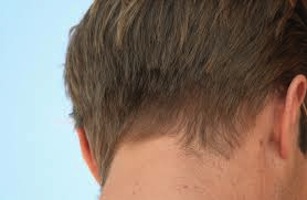 Have you ever given much thought to the purpose of your hair? Mostly, it’s seen as a cosmetic feature, largely determining how you look.
Have you ever given much thought to the purpose of your hair? Mostly, it’s seen as a cosmetic feature, largely determining how you look.
However, did you also know that it plays a vital role in gender identification and the transmission of sensory information? The science behind the hair is pretty fascinating.
Here we’ll look at the life cycle of the hair follicle and why hair loss might occur.
Understanding hair follicles
The hair is broken down into two main parts. Firstly, you have the follicle, which is situated underneath the skin. The second part is the hair itself, or the shaft as it is otherwise known. This is the part you can see.
The follicle is constructed of several different layers including the papilla and the bulb. The papilla contains little blood vessels that are responsible for keeping the cells nourished. The bulb contains these cells and they divide roughly every 23-72 hours. The follicle is protected by two sheaths.
The most amount of hair follicles you’ll ever have on your scalp is 100,000 and fascinatingly this occurs at 22 weeks of age! Throughout your life, you will never regenerate the follicles. So, the number of follicles you are born with is basically the amount you have for life.
What does regenerate over time however is actual hair. There are three stages in the hair growth cycle. First it grows, then it “rests” and then finally it falls out. It’s completely normal to lose a certain amount of hair each day. However, there are certain things that can alter the growth cycle, causing more hairs to fall out at the same time, resulting in hair loss.
Common hair loss problems
There are lots of different types of hair loss, but unless the hair follicle itself becomes damaged, the condition is usually only temporary. Some of the different types of hair loss include:
- Male pattern baldness
- Telogen Effluvium
- Alopecia Areata
In male pattern baldness, the hair follicle shrinks over time, leading to thinning and eventually total hair loss. Once it shrinks, the follicle struggles to produce new hair, though the follicle itself doesn’t die.
In telogen effluvium, the some of the follicles stop producing hair, causing visual thinning. There currently isn’t a lot of research out there to explain why this happens, but it’s a common problem many men suffer with. It’s rare to lose all of the hair on the head via telogen effluvium, but it does get significantly thinner.
Finally, considered one of the more severe types of hair loss, alopecia areata occurs when the body’s immune system starts attacking the hair follicles. This can result in complete baldness and it’s one of the only types where the follicle can be permanently damaged; meaning the hair loss could also be permanent.
So as you can see, the hair follicle plays a large role in hair loss. Discovering how it works and the science behind the hair follicle is truly fascinating. It also helps you to develop a better understanding of why hair loss occurs.
